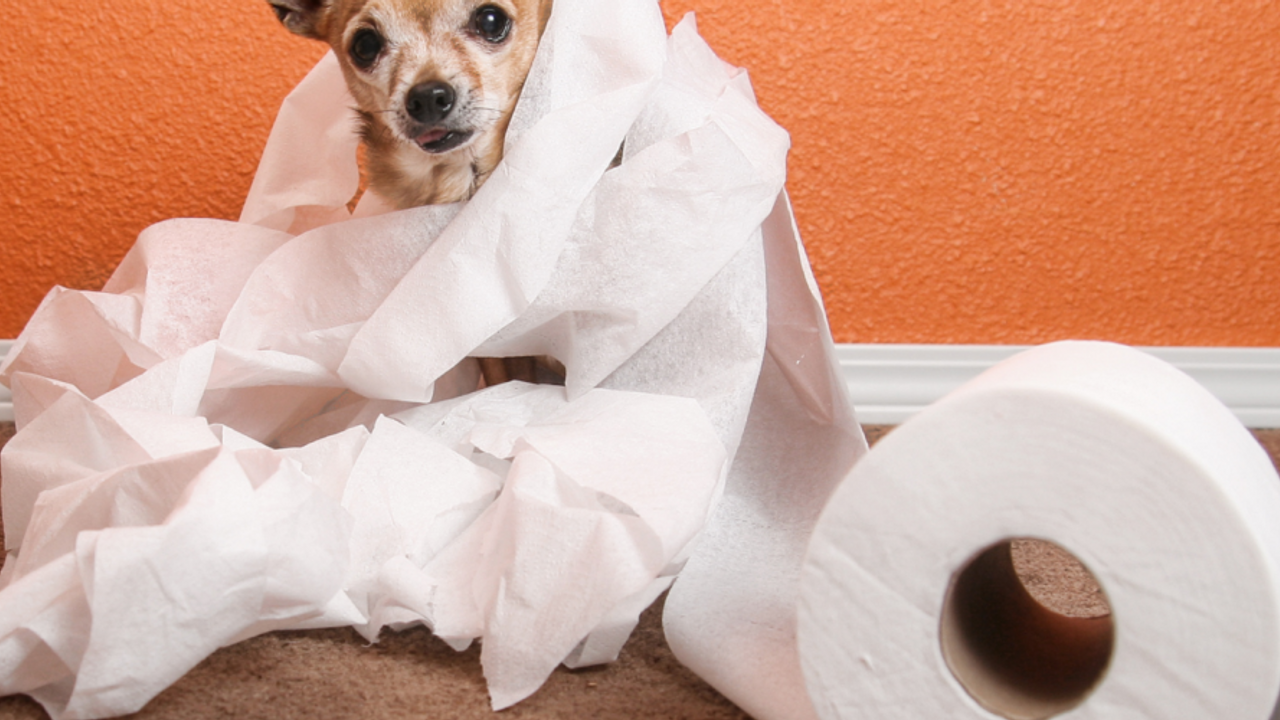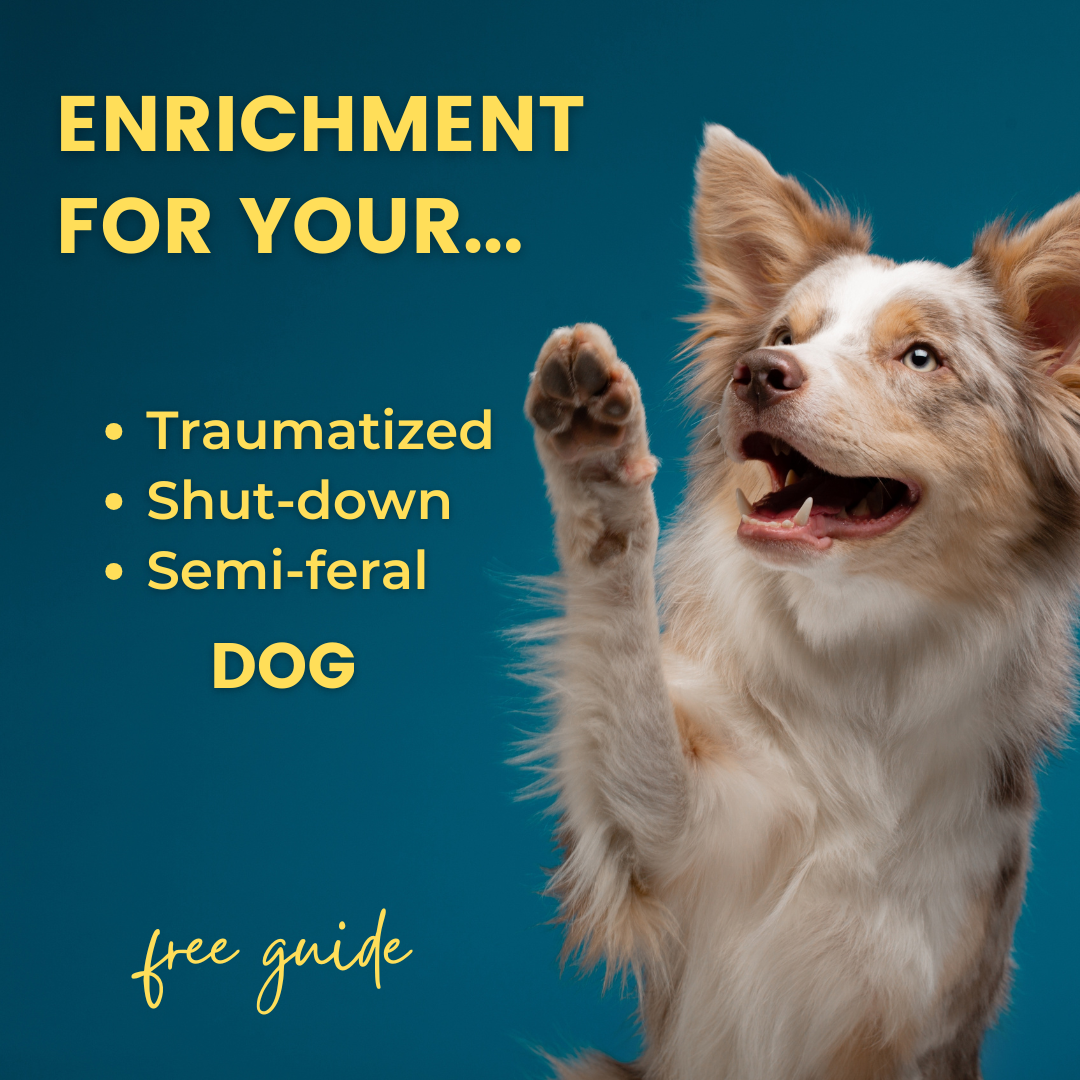
We tend to think of going out to the back yard, or on a walk, as “normal” dog activities. However, for a very fearful dog, these are not normal behaviors. In fact, they might be downright impossible for them. For these dogs, it’s important to provide indoor “potty” options.
Do you need an indoor toileting area for your fearful dog? Is it ok to drag or carry your fearful dog outdoors instead? Read on….
Can’t I just carry or pull my fearful dog outside to pee? How else will they learn?
You CAN often force a dog to go outdoors, but I don’t recommend it. In the long run, forcing your fearful dog to do something they’re afraid of is likely to work against you. They might start to fight you more vigorously when their original protests are ignored. For example, if your dog originally ran and hid when it was time to go out, they might now start growling and biting. Why? Because you taught them that more “peaceful” resistance didn’t work.
You also risk your dog becoming more fearful and avoidant of you. Specifically, your dog might start to start to avoid you when you approach or try to touch them, even in situations when you weren’t planning to carry or pull them outdoors. That will make all other training much more difficult.
So how WILL your dog learn to eliminate outdoors? Like any other training with a fearful dog, you’ll work toward this goal very gradually. That might mean slowly migrating the indoor potty area toward the door to the yard. Or if you don’t have a yard, very slowly introducing a leash and harness. There’s no quick fix for this, unfortunately. Fearful dogs have their own schedules.
How do I set up an indoor potty area for my fearful dog?
When setting up an indoor potty area, you’ll probably need to experiment to learn what your dog prefers. Here are some guidelines to get you started. Watch the video below to see examples.
1) An indoor potty area should be easy to access. Last week we talked about setting up safe spaces for fearful dogs. If you can place the indoor potty area inside the dog’s safe space, that is ideal. If you can’t, put the potty area as close as possible to the safe space. Make sure that your fearful dog doesn’t have to cross any wide open or busy spaces to get to it.
2) An indoor potty area should be bigger than you think it needs to be. Having cleaned up an untold number of “just off the edge” accidents in recent months, I can assure you that however big you think your dog’s indoor potty area should be, it should be bigger. For our 15 lb dog, 4 large potty pads is about right. Additionally, provide vertical surfaces for male dogs to pee on. This will increase the likelihood that your dog will use the area you’ve set up.
3) Use materials that are easy to clean. In the video below, I briefly review disposal pee pads, washable pads, and artificial turf squares. Disposal pads are easiest to clean since you can just throw them away, but you’ll end up creating a lot of trash. Artificial turf squares are a pain to clean.
If you use these tips to set up an indoor potty option for your dog, we’d love to hear from you! Join our Facebook group and post your questions or comments there. Reach out to us by email at [email protected]. If you're looking for more guidance with your fearful dog, check out our monthly training membership.
Categories


Have a dog who is too anxious to have fun? Grab this free guide & video lesson all about how to teach your extremely fearful dog their 1st enrichment game.


Community
We offer a free private Facebook support group for owners of fearful dogs to connect and share their stories. Join us there.


